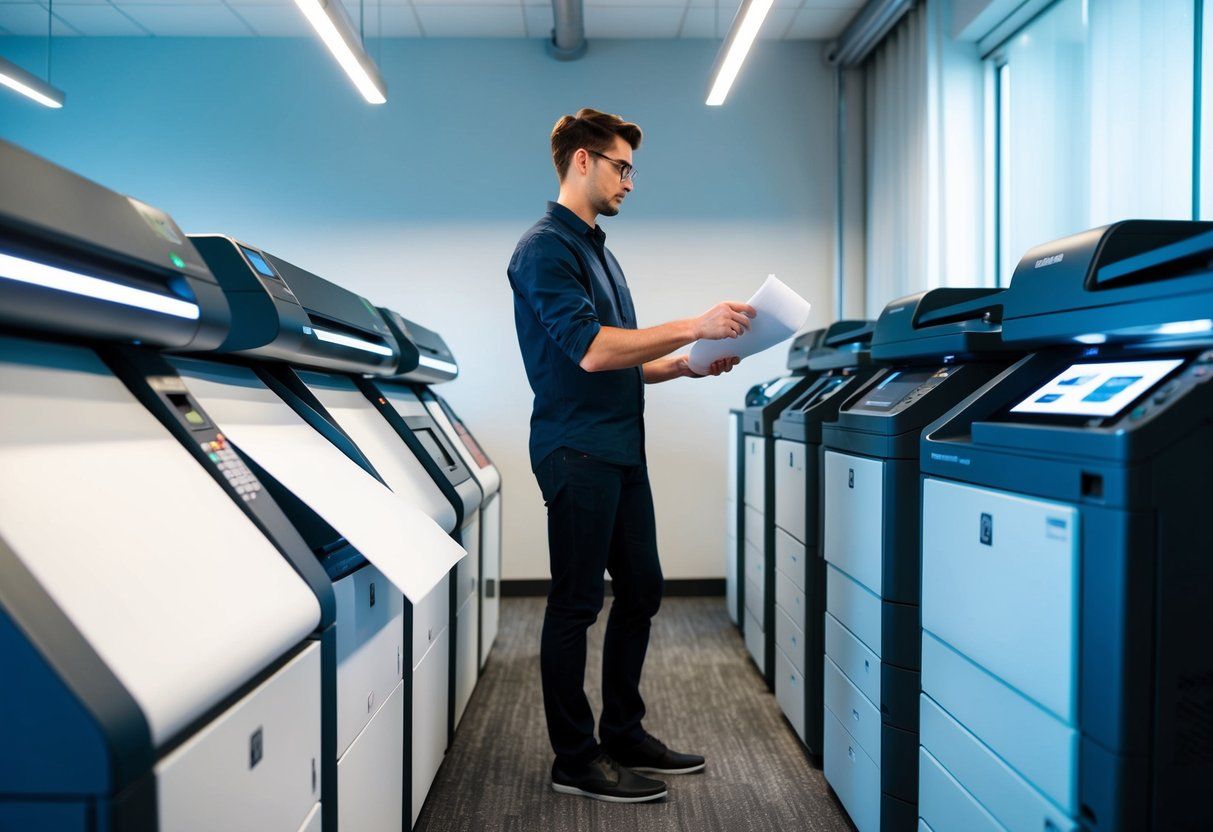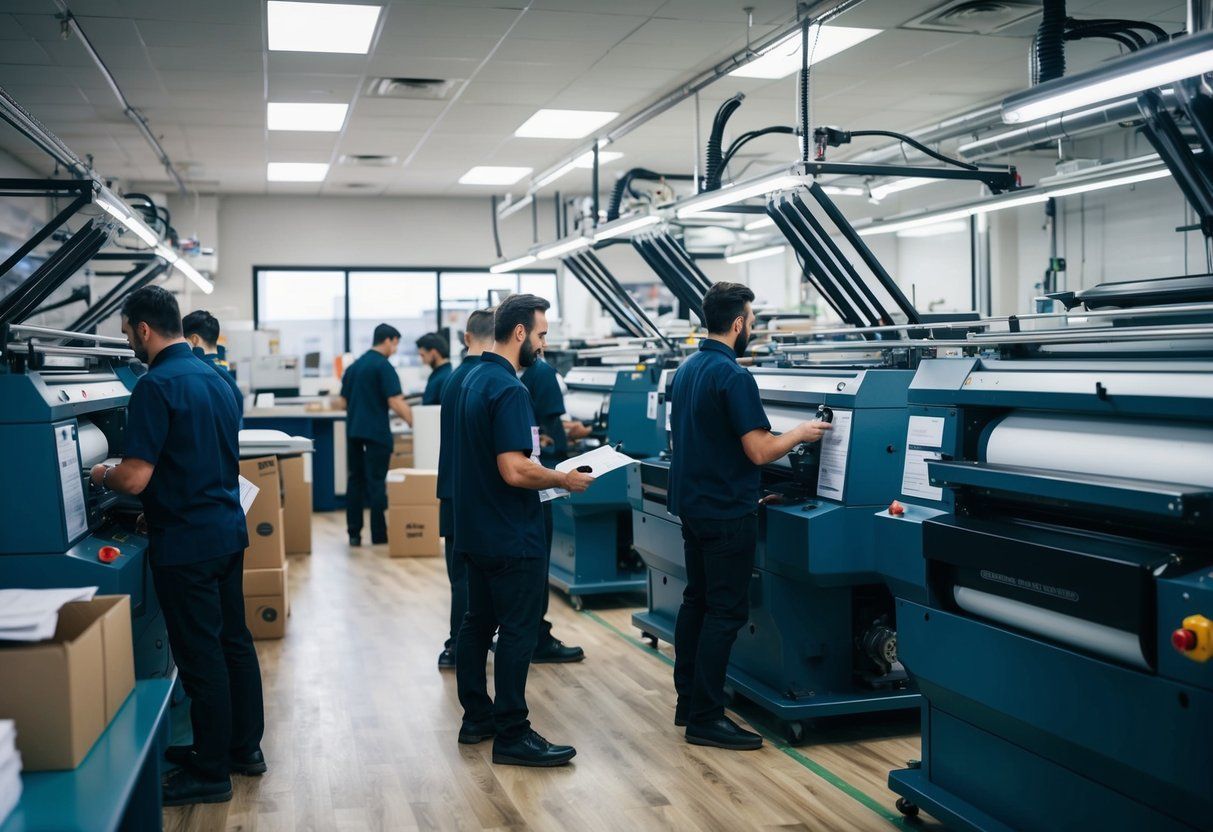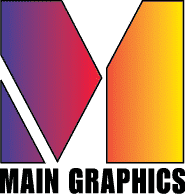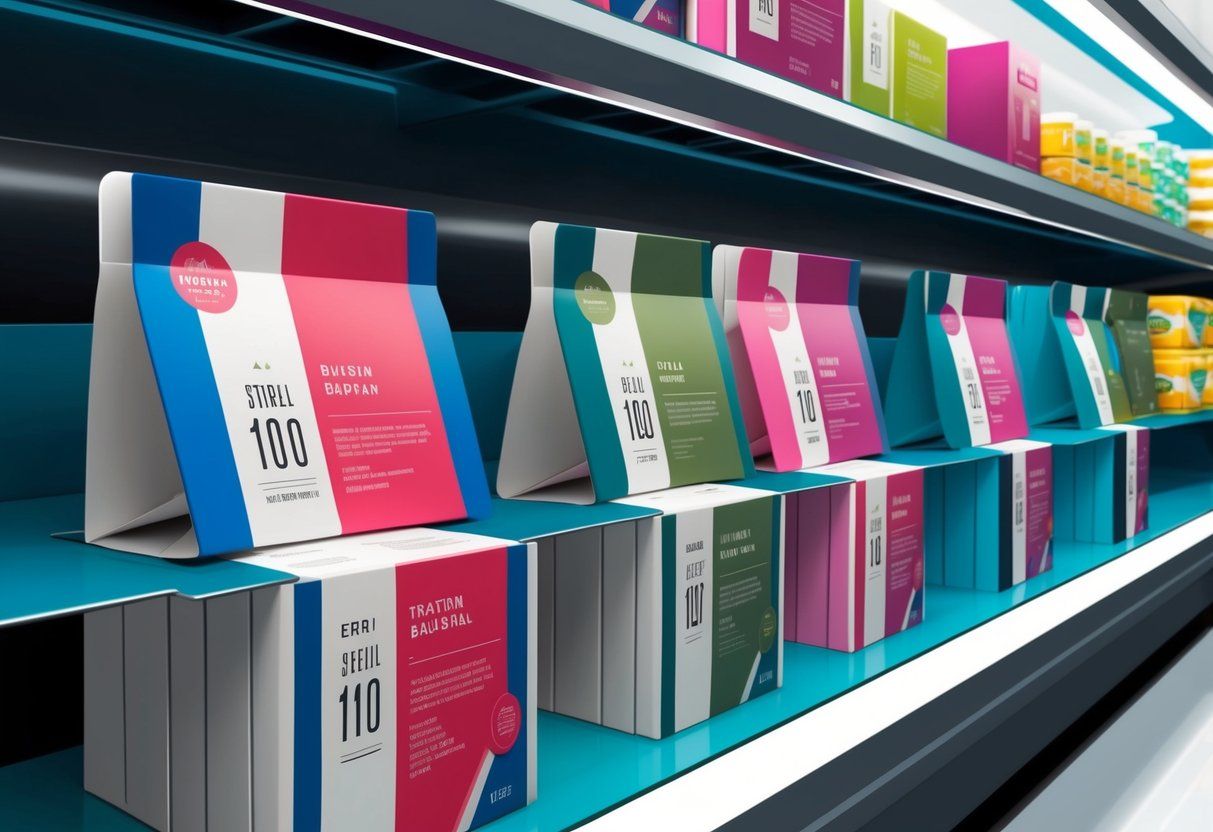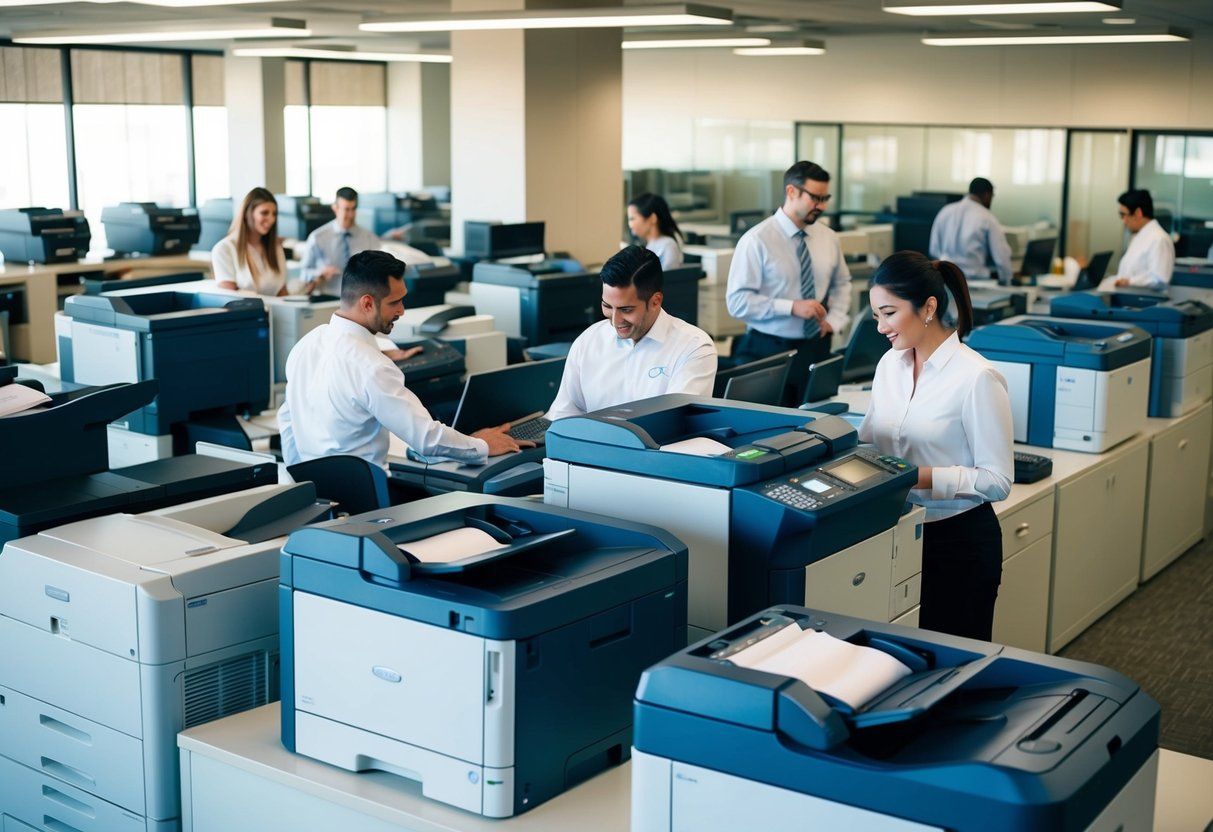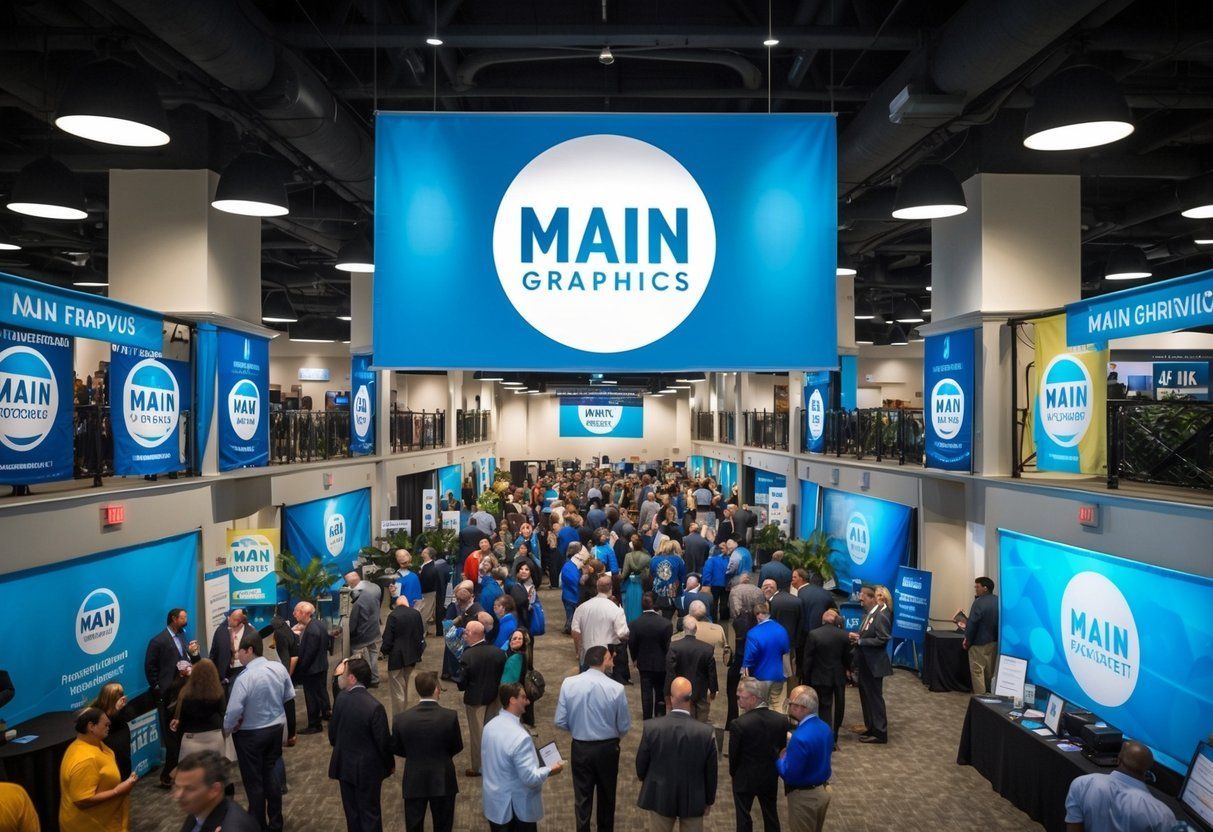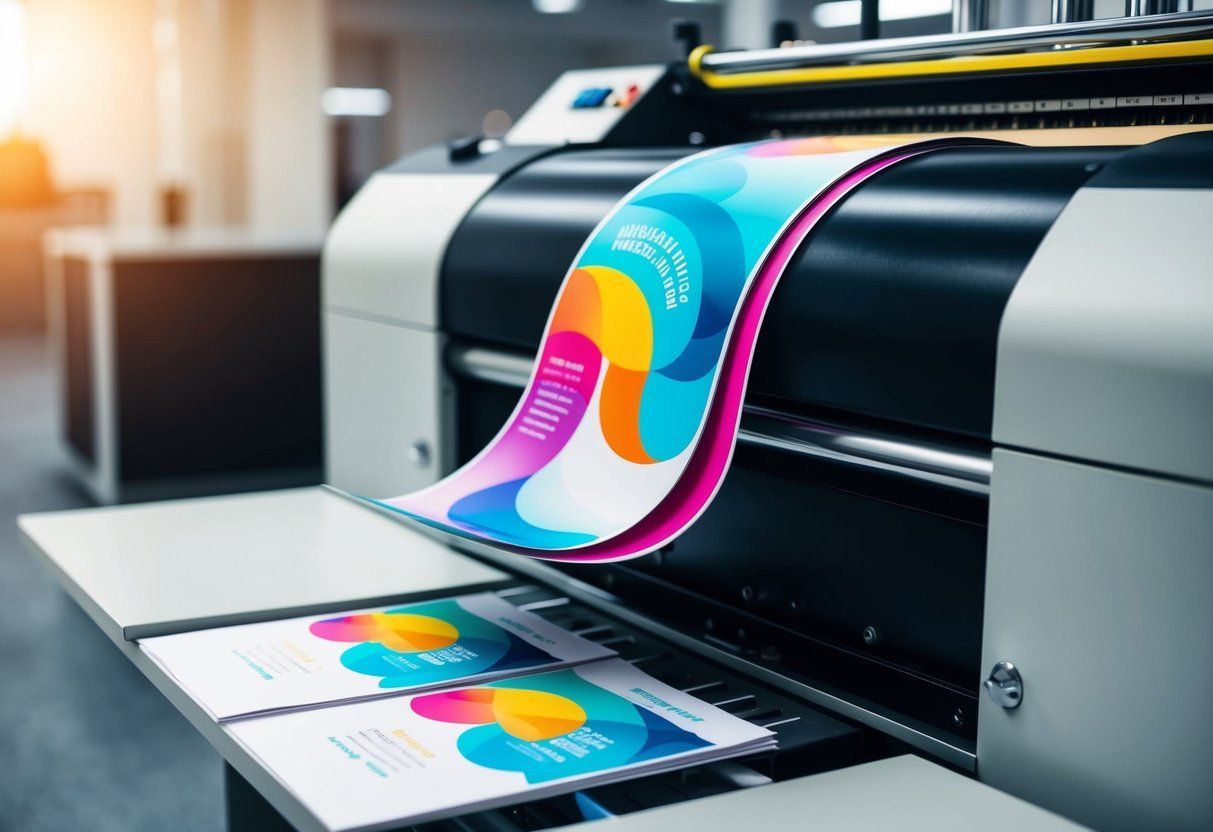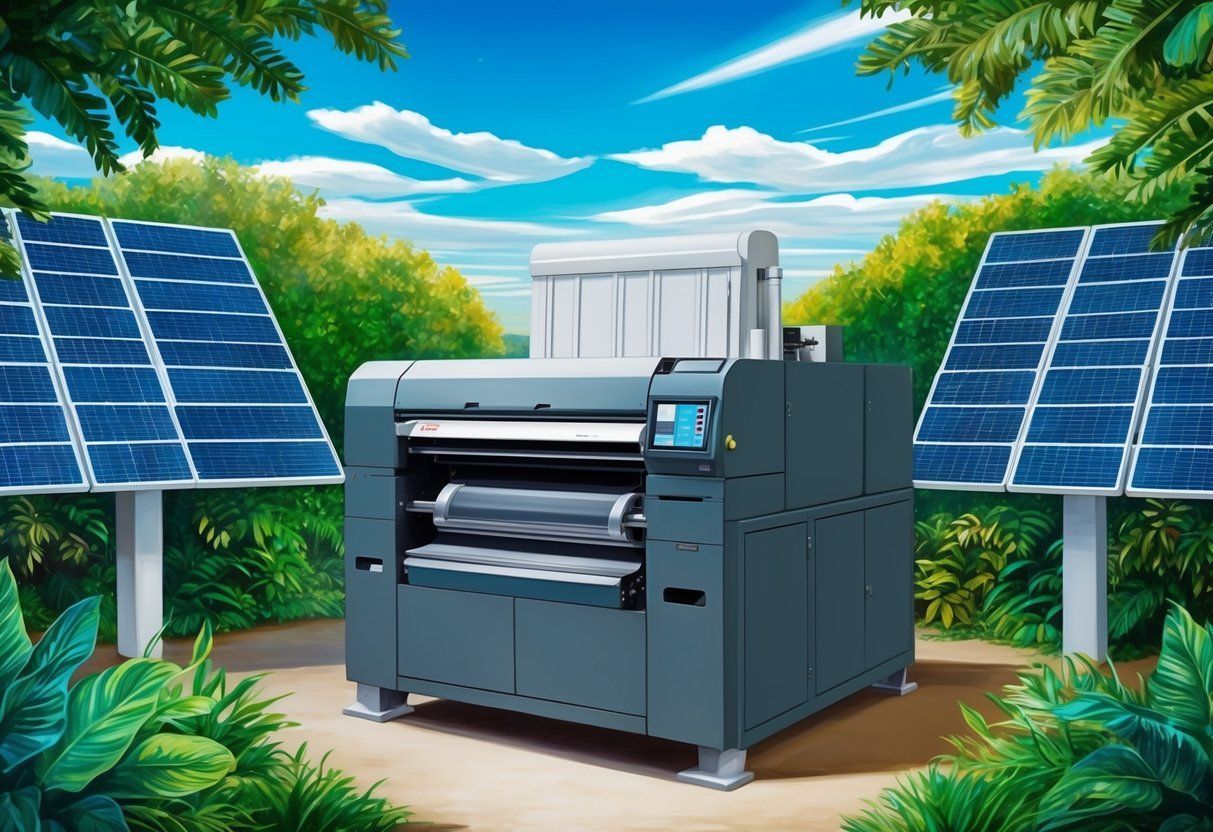High-Volume Printing Strategies: Maximizing Efficiency and Output
In the fast-paced world of printing, high-volume strategies are essential for businesses that require a large number of printed materials in a short period. Whether it’s for marketing materials, publications, or packaging, efficient high-volume printing can significantly reduce costs and increase productivity. By leveraging advanced technologies and equipment, companies can manage large print jobs effectively while maintaining quality standards.
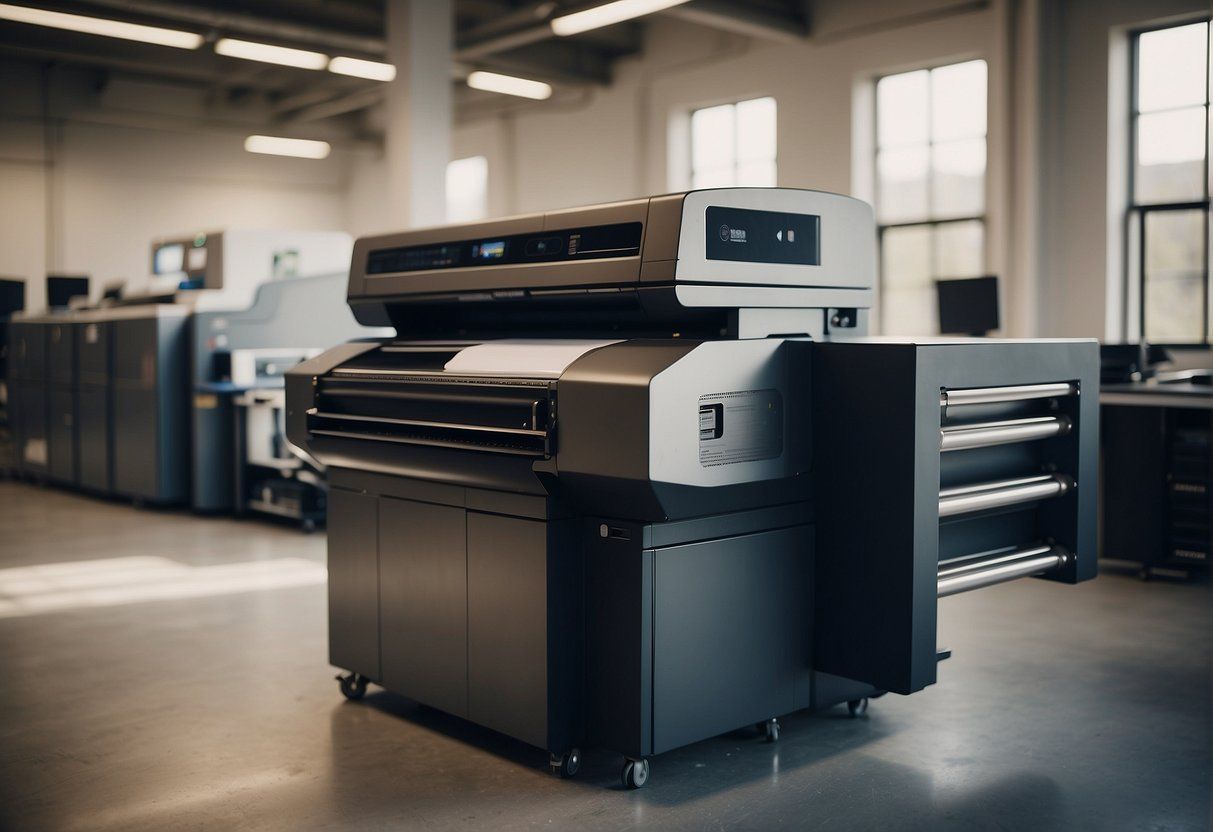
The key to successful high-volume printing lies in the optimization of the printing process. This includes careful planning, streamlining workflow, and selecting the appropriate printing technology. Digital printing offers quick turnaround times and flexibility for high-volume demands, while offset printing remains the go-to method for larger, more cost-effective runs. It is crucial to assess the specific needs of the project to determine the most suitable approach.
Moreover, sustainable practices in high-volume printing are gaining traction as environmental concerns rise. Printers are now adopting eco-friendly inks, recycled materials, and waste reduction techniques. This not only minimizes the environmental footprint but also appeals to the growing segment of eco-conscious consumers. Companies that adapt to these sustainable methods are likely to stay ahead in a competitive market.
Fundamentals of High-Volume Printing
High-volume printing strategies are integral to industries requiring large-scale production of printed material. These strategies prioritize efficiency, production speed, and consistent quality.
Understanding High-Volume Printing
High-volume printing refers to the production of large quantities of printed materials in a condensed time frame. It is essential for businesses that need to disseminate substantial amounts of prints, such as brochures, newspapers, and packaging. The key components of high-volume printing include speed, consistency, and the ability to maintain high quality throughout the printing process.
Printer Types and Technologies
Various printer types are available for high-volume printing, each employing different technologies suited for specific use cases.
- Digital Printing : Offers flexibility and speed with the capability for on-the-fly modifications. This technology excels in short to medium print runs with high detail and color accuracy, using toner or liquid ink.
- Offset Printing : Ideal for large runs of high-quality prints, offset printing operates by transferring ink from plates to a rubber blanket, then onto the printing substrate. This achieves efficient and cost-effective production for high-volume orders.
- Gravure Printing : Utilized for very high-volume runs with a premium on quality, gravure printing involves engraving the image onto a cylinder, making it exceptionally suited for fine detail and extensive production runs.
Choosing the Right Substrate
The substrate—the material upon which printing occurs—significantly impacts the outcome of the high-volume printing process. Factors such as ink absorption, durability, and overall finish must be considered in relation to the intended application. Common substrates include:
- Paper : Varying in weight and finish, suitable for books, magazines, and flyers.
- Cardboard : Often used for packaging due to its stiffness and durability.
- Plastic Films : Provides resistance to moisture and tear, typically used for labels and flexible packaging.
- Metals : Used for high-end printing applications, offering longevity and distinct visual effects.
Optimizing Printing Processes
High-volume printing operations demand strategies that focus on speed, customization, and consistency. By enhancing production print methodologies, incorporating advanced printing equipment, and streamlining workflows for fast turnaround, businesses can achieve superior performance.
Streamlining Production Print
One crucial approach to optimizing production print is to establish standardized procedures. These should involve:
- A predefined sequence of operations.
- Automated workflows to reduce manual intervention.
- Batch processing for handling large jobs efficiently.
- Consistent quality checks to maintain output standards.
Innovations in Printing Equipment
Businesses can benefit from investing in the latest printing equipment, which often provides:
- Enhanced speed and efficiency .
- Improved customization options through digital controls.
- Greater consistency with advanced color matching technologies.
- Robust construction for long-term, high-volume usage.
Enabling Fast Turnaround Times
To facilitate fast turnaround times, strategies may incorporate:
- Lean inventory management to reduce waste and improve speed.
- Rapid setup and changeover times for diverse print jobs.
- Real-time tracking systems for immediate status updates.
- Scheduling optimizations to ensure continuous production flow .
Economic and Marketing Considerations
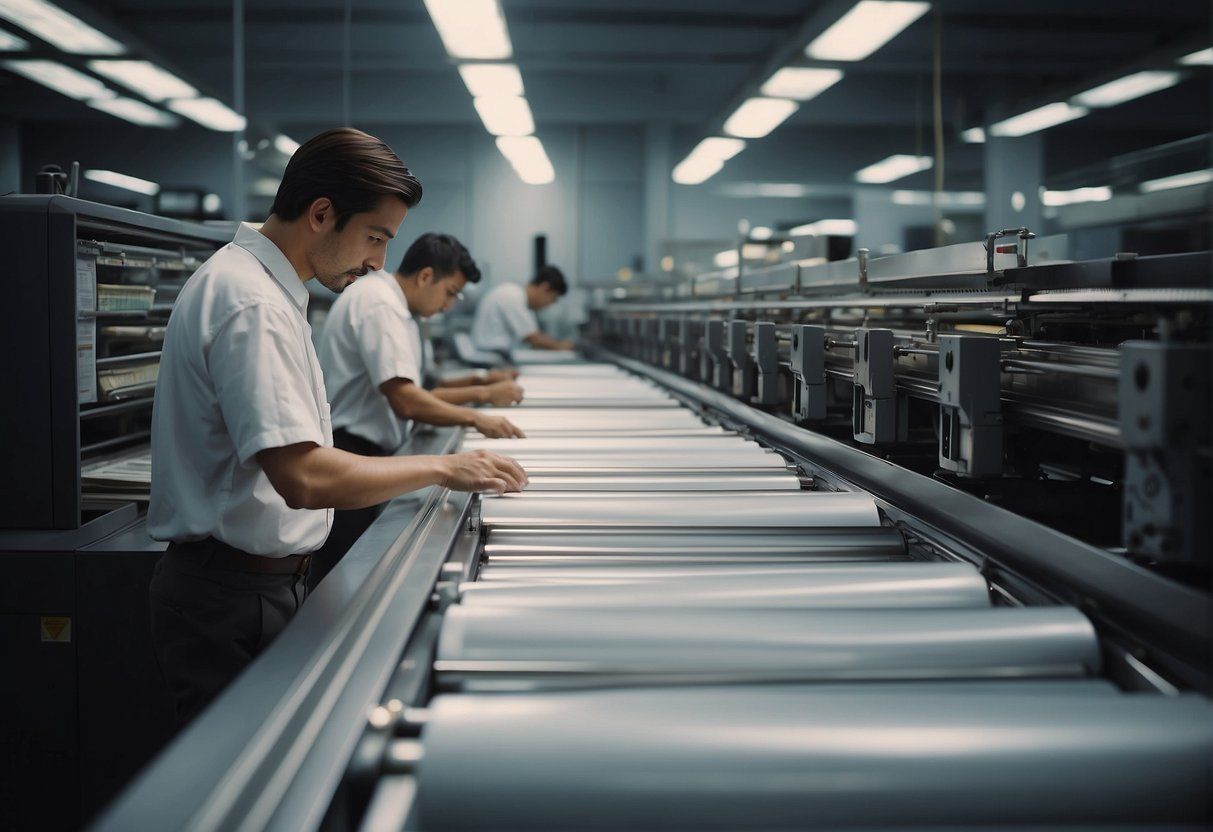
In high-volume printing, effective management of economic and marketing considerations is crucial for operational efficiency and market impact. Decisions about cost reduction, marketing material production, and inventory control directly influence profitability.
Cost-Savings Strategies
High-volume printers explore various options to reduce costs without sacrificing quality. Bulk purchasing of supplies can lead to significant discounts and lower the cost per unit. Commercial printers also benefit from economies of scale; as order volumes increase, the average cost decreases. They may negotiate long-term contracts with paper suppliers to lock in lower prices, helping them manage budgets more effectively.
| Order Size | Cost-Saving Benefit |
|---|---|
| Small Orders | Limited Savings |
| Large Orders | Increased Savings |
Another challenge is to maintain quality while cutting costs, which may involve investing in more efficient printing technology that speeds up the printing process and reduces waste.
Marketing Collaterals and Materials
Creating impactful marketing materials such as flyers , brochures , postcards , and direct mail pieces is vital for any advertising campaign. High-volume printing plays a significant role in producing these materials cost-effectively. Printers must ensure the designs are aligned with the brand’s message and appeal to the target audience to optimize the marketing impact.
| Material | Marketing Impact |
|---|---|
| Flyers | High |
| Brochures | Medium to High |
| Postcards | Medium |
| Direct Mail | Variable |
Developing a strategic approach to the timing and quantity of marketing material production helps in seizing market opportunities without incurring excessive inventory costs.
Inventory and Supply Chain Management
Careful inventory and supply chain management are crucial to prevent overstocking and obsolescence of materials. Commercial printers must forecast demand accurately to align their orders with customer needs, which minimizes excess inventory and reduces storage costs.
- Supply Chain Efficiency : Streamlining the supply chain ensures timely delivery of raw materials and fulfillment of customer orders.
- Challenges : Printers need to be prepared for supply chain disruptions and have contingency plans in place.
Maintaining a balance between supply and demand mitigates the risk of material shortages or excess, which can both be costly. Adopting a just-in-time inventory approach can enhance responsiveness to market changes and customer needs.
The Role of Printing in Business Growth
In the business landscape, printing plays a pivotal role in facilitating clear communication strategies, catering to specific industry demands, and enhancing a company’s presence at pivotal gatherings.
Impacting Corporate Communications
In an era where digital media is prevalent, printed materials maintain their significance in corporate communications. Businesses leverage high-quality printed documents to convey professionalism and credibility. Annual reports, brochures , and business cards are tangible items that can leave a lasting impression. Thoughtfully designed marketing materials help a business stand out and reflect its commitment to quality and attention to detail.
Supporting Industry-Specific Needs
Each industry has its particular set of needs when it comes to printing. For instance, label design is crucial in retail to provide product information and brand identity, while in legal sectors, the integrity of high-volume document printing is essential. Here’s an overview of how printing supports various industries:
- Retail : Custom labels and packaging can significantly influence consumer perception.
- Legal : Secure and accurate printing of sensitive documents ensures compliance and maintains trust.
- Healthcare : Patient forms and information booklets require clarity and reliability in their printing.
- Education : Printed educational materials and resources are fundamental for learning processes.
Expanding Market Reach through Events
Printed materials like signs and banners are essential in expanding a business’s market reach during events like trade shows. They draw attention and convey information efficiently. Businesses often use the following items to enhance their visibility during events :
- Signs : Bold and strategically placed signs can direct attendees to a company’s booth.
- Brochures : Informative leaflets or brochures distributed during an event can increase product or service awareness among a wider audience.
- Event-specific materials : Custom print work for a particular trade show or event can foster connectivity between the brand and potential customers, as it resonates with the event’s theme or focus.
Utilizing print effectively in these areas can be a significant component of a company’s growth strategy, catering to effective corporate communication, satisfying niche requirements across different industries, and expanding a business’s footprint in market-rich environments like events and trade shows.
Sustainability and Compliance in Printing
In high-volume printing, companies face significant challenges in reducing environmental impact while meeting rapidly changing global compliance standards. Sustainable practices and robust compliance are not just beneficial; they are essential for maintaining a competitive edge.
Adopting Eco-Friendly Practices
Companies can markedly decrease their environmental footprint by selecting recycled materials and soy-based inks. Additionally, digital printing technology offers a more sustainable alternative due to its flexibility in print runs, reducing waste from overproduction. Techniques like scalability in printing operations allow businesses to adapt quickly to changing demands without excess resource use.
Ensuring Global Compliance
Global compliance in label printing mandates adherence to diverse international standards, including environmental regulations. A centralized labeling system ensures consistency and accuracy across different markets, facilitating agility in adapting to new laws. Comprehensive software solutions are critical for enterprise labeling to maintain compliance at all operational levels.
Building a Centralized Labeling System
Implementing a centralized labeling system enables companies to maintain control over labeling processes across multiple locations. This approach drives efficiency and flexibility , enabling quick updates to labels in response to regulatory changes. Standardization via a central system reduces errors and boosts enterprise labeling compliance and sustainability.
Collaboration with Partner Organizations
To optimize the supply chain, enterprises should actively foster a network with partner organizations . These collaborations can streamline logistics and leverage shared knowledge for more sustainable practices, reinforcing the environmental commitment at every stage. Joint efforts can also enhance compliance, as partners align their operations with agreed-upon sustainability and regulatory goals.
Frequently Asked Questions
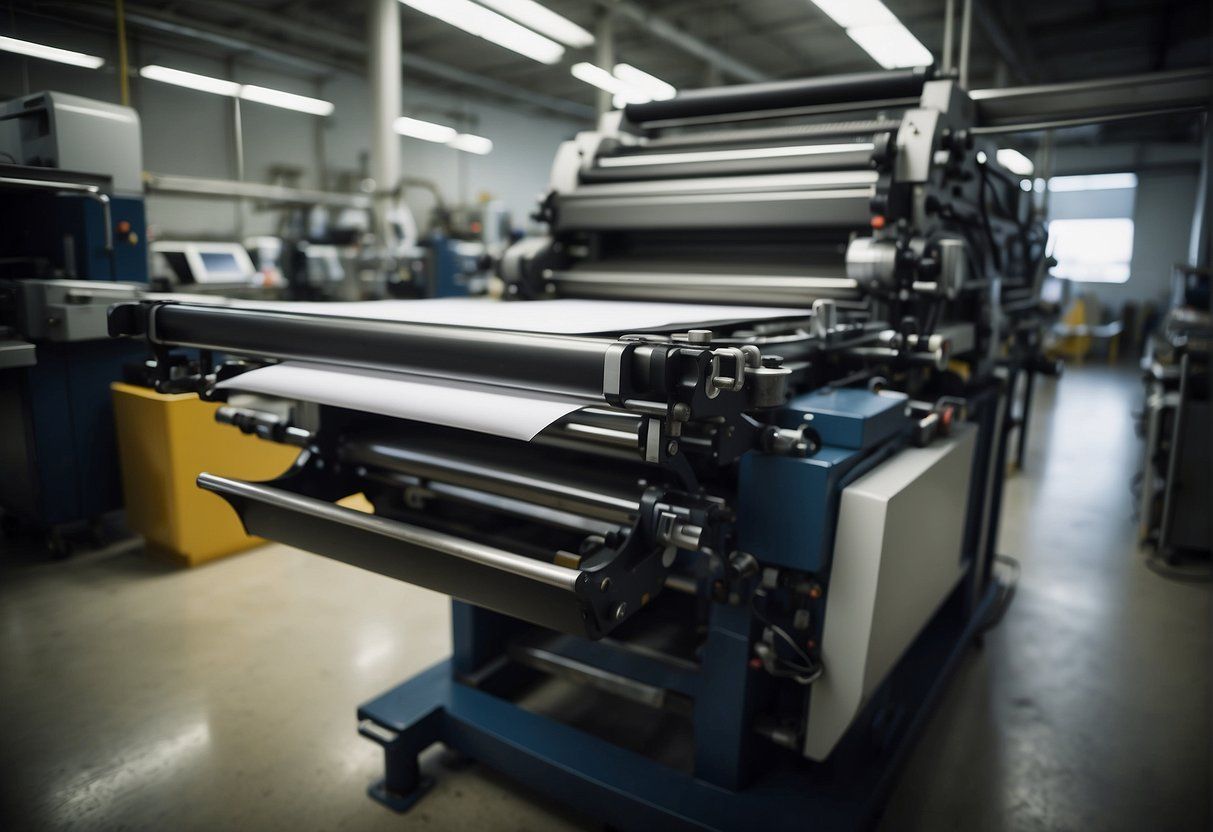
When tackling high-volume printing, it’s essential to understand the capabilities of your printer, strategies for efficient production, and factors impacting cost and productivity.
How can I determine if a printer is capable of handling high volume print jobs?
A printer’s capability for high volume tasks is indicated by its monthly duty cycle, which reflects the maximum number of pages it can print without incurring damage. Additionally, manufacturers often specify whether a printer is designed for heavy usage.
What strategies can be employed to manage large scale print production efficiently?
Efficiency in large scale print production can be achieved through automated workflows, batch processing, and maintaining regular equipment maintenance schedules to prevent downtime.
Which factors influence the cost-effectiveness of printers in large volume printing scenarios?
In large volume printing, cost-effectiveness is influenced by factors such as the initial cost of the printer, consumable costs like ink or toner, energy consumption, and maintenance expenses.
What are the advantages of laser printers over inkjet for bulk printing tasks?
Laser printers offer faster print speeds, greater page yields from toner cartridges, and lower cost per page, which together make them more advantageous for bulk printing tasks when compared to inkjet printers.
How does print speed affect the overall productivity in high volume printing operations?
Print speed directly affects productivity by determining the number of pages produced in a given period. Faster printers can increase output and reduce the time needed to complete large printing jobs.
Can continuous ink systems significantly reduce printing costs in mass printing environments?
Continuous ink systems can reduce printing costs by providing bulk ink supplies that are less expensive on a per-page basis compared to standard cartridges, making them suitable for mass printing environments.…
